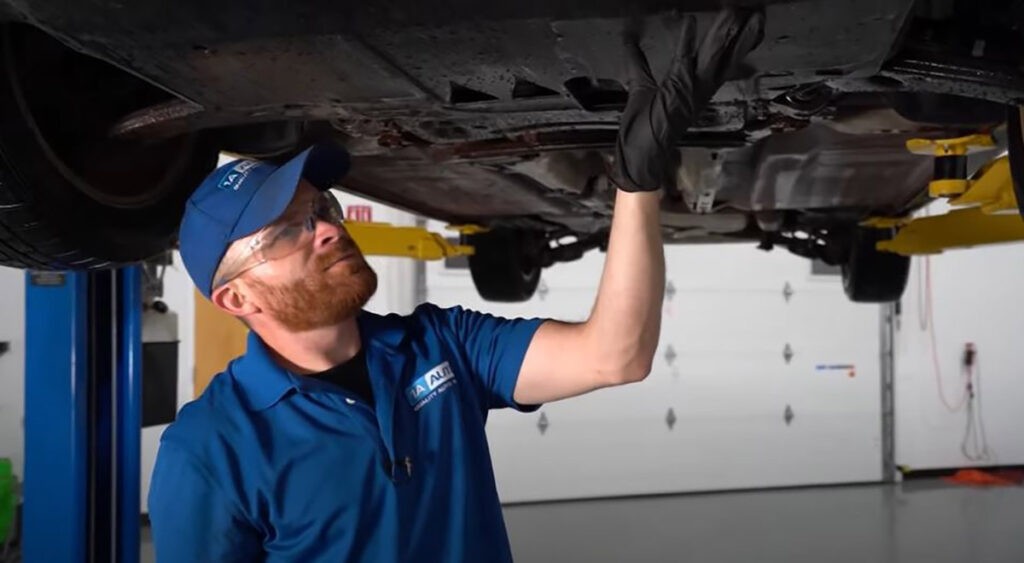That unsettling scraping sound while you’re driving might have you worried. Before you panic, consider this: it could be something as simple as a plastic part under your car dragging along the road. Often, this culprit is the engine splash shield, a component designed to protect your engine bay. Let’s dive into what this part is, why it might be dragging, and how you can address it, potentially even with a do-it-yourself fix.
Understanding the Plastic Part Under Your Car: The Splash Shield
The splash shield, typically made of plastic, is positioned beneath your vehicle’s engine compartment. Its primary function is to act as a barrier, shielding the engine area from road debris, water, and other contaminants. This protection is crucial because the engine compartment houses sensitive components, including electronics, wiring, and vital systems.
While some components are less vulnerable, like a car battery (unless the vent caps are missing, exposing it to moisture), critical parts such as the engine computer (ECU) or fuse box are at risk if exposed to water and road grime. Damage to these parts can lead to a cascade of problems, affecting various vehicle functions.
Beyond protection from debris and moisture, many modern vehicles utilize plastic splash shields for aerodynamic purposes. These shields are engineered to manage airflow under the car, contributing to fuel efficiency. A damaged or dragging shield disrupts this airflow, potentially leading to increased drag and reduced miles per gallon. Vehicles designed for off-road use, such as 4WD trucks, often employ metal splash shields for enhanced durability against rocks and more substantial debris encountered in rugged terrains.
Why is the Plastic Splash Shield Dragging?
A dragging splash shield is usually a sign of damage or loose mounting. Common reasons include:
- Impact Damage: Hitting road debris, curbs, or speed bumps can crack or break the plastic shield.
- Loose Fasteners: Over time, the clips, bolts, or screws securing the shield can loosen or break, causing it to sag.
- Cracks and Tears: The plastic material can become brittle with age and develop cracks, especially around mounting points, leading to failure.
- Improper Installation: If the splash shield was previously removed for maintenance or repair, it might not have been reinstalled correctly.
Driving with a Dragging Plastic Part: Is It Safe?
While a dragging plastic part might seem like a minor annoyance, it’s best addressed promptly. Driving with a dragging engine splash shield presents several risks:
- Increased Engine Compartment Exposure: The primary purpose of the shield is compromised, increasing the risk of damage from water, salt, and debris to sensitive engine components.
- Reduced Fuel Economy: If the shield is designed for aerodynamics, dragging can negatively impact fuel efficiency.
- Annoying Scraping Noise: The constant scraping sound is irritating and can be a sign of further damage occurring as the shield is worn down.
- Potential for Complete Detachment: A loosely hanging shield can detach completely while driving, posing a road hazard to yourself and other drivers.
Therefore, if you notice a scraping noise and suspect a dragging plastic part under your car, it’s wise to investigate and fix it as soon as possible.
DIY Repair: Fixing a Dragging Plastic Splash Shield
For minor damage like cracks or loose sections, you might be able to perform a DIY repair and eliminate that scraping noise. Here’s a step-by-step approach using common tools:
-
Inspect the Damage: Safely raise your car using ramps or jack stands and visually inspect the splash shield. Determine the extent of the damage. If the shield has large holes or is severely broken, replacement might be necessary. However, if the damage is limited to cracks or loose edges, repair is often feasible.
-
Prepare for Repair: For cracks, a simple and effective repair method involves drilling small holes along the crack and using zip ties (wire ties) to secure the broken pieces together. Gather a drill, small drill bits, and zip ties.
-
Drill and Secure: Drill small holes on either side of the crack, along its length. Thread zip ties through these holes and tighten them to pull the cracked pieces together. Use enough zip ties to ensure the crack is firmly closed.
-
Alternative Repair Methods: Besides zip ties, you can also use strong adhesive tape (like duct tape or specialized automotive tape) or plastic epoxy glue for minor cracks. These methods might be suitable for smaller repairs or as temporary fixes.
When Replacement is Necessary
While DIY repairs can address minor issues, there are times when replacing the entire plastic splash shield is the best course of action. Consider replacement if:
- The shield has large holes or missing sections.
- The plastic is severely brittle and crumbling.
- Multiple mounting points are broken or damaged.
- DIY repairs are not holding effectively.
Replacing the splash shield ensures proper protection and aerodynamic function. While professional installation is an option, replacing it yourself with a new or used part can save you money.
Stop the Scraping: Fix That Dragging Plastic Part
A dragging plastic part under your car, often the engine splash shield, is more than just an annoying noise. It can compromise protection for your engine compartment and potentially affect fuel economy. By understanding what this part is and how to address the issue, you can maintain your vehicle and drive with peace of mind, knowing you’ve tackled that unsettling scraping sound.
